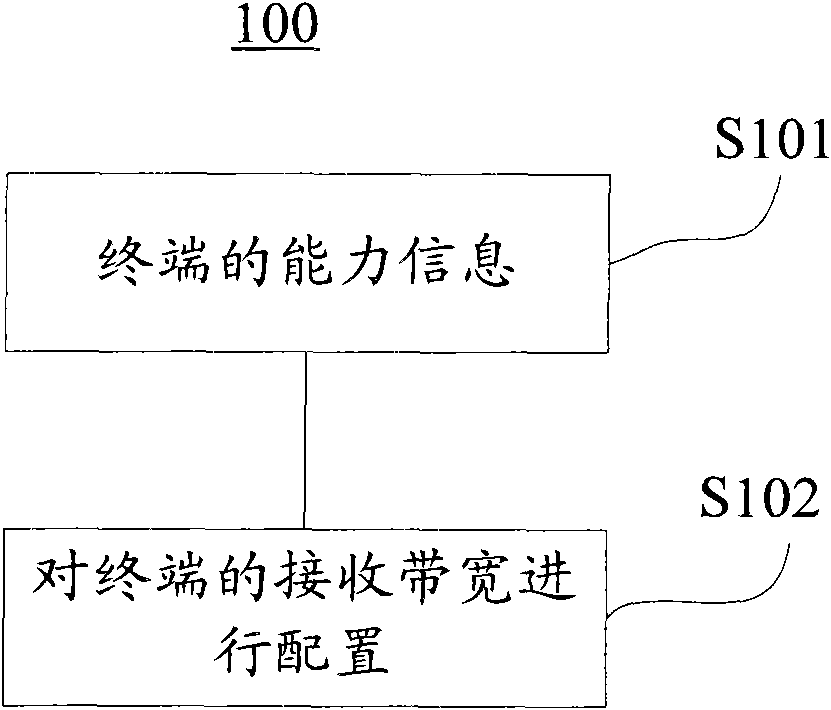Resource scheduling method and resource scheduling device in multi-carrier communication system
A multi-carrier communication and resource scheduling technology, applied in the field of resource scheduling equipment and resource scheduling, can solve the problem of inconsistent bandwidth between base stations and terminals, and achieve the effect of solving the problem of data reception
- Summary
- Abstract
- Description
- Claims
- Application Information
AI Technical Summary
Problems solved by technology
Method used
Image
Examples
Embodiment 1
[0021] Example 1 (TDD system)
[0022] like figure 2 As shown, the base station is configured with three carriers in the Band 40 (2300-2400MHz) frequency band, namely CC1 (20MHz), CC2 (20MHz) and CC3 (10MHz), both terminals UE1 and UE2 support Band 40, and UE1 is in this Up to two carrier receptions are supported in the frequency band, and UE2 supports up to one carrier in the frequency band.
[0023] When UE1 and UE2 report the above capability information to the network side through, for example, RRC signaling, or the network side obtains the above capability information of UE1 and UE2 from the core network, the base station can schedule UE1 to CC1 and CC2 according to the capability of UE1, so that UE1 The receiving baseband DC position is located at the center of the two carriers, which does not affect normal data reception, and UE2 can be scheduled to CC1, CC2 or CC3 according to the capability of UE2. If most of the activated terminals in the base station support at...
Embodiment 2
[0024] Embodiment 2 (FDD system)
[0025] The difference between the FDD system and the TDD system is that the transmit bandwidth of the base station in the TDD system is the same as the receive frequency, while the base station in the FDD system uses different frequencies for transmit and receive.
[0026] like image 3 As shown, the base station is configured with three carriers in the Band 7 (2500-2570 / 2620-2690MHz) frequency band, namely CC1 (20MHz), CC2 (20MHz) and CC3 (10MHz), of which the 2620-2690MHz part is the transmission bandwidth . Both terminals UE1 and UE2 support Band 7, and UE1 supports up to two carrier receptions (R10) in this frequency band, and UE2 supports up to one carrier (R8 / R9) in the frequency band.
[0027] When UE1 and UE2 report the above capability information to the network side through, for example, RRC signaling, or the network side obtains the above capability information of UE1 and UE2 from the core network, the base station can schedule...
PUM
 Login to View More
Login to View More Abstract
Description
Claims
Application Information
 Login to View More
Login to View More - R&D
- Intellectual Property
- Life Sciences
- Materials
- Tech Scout
- Unparalleled Data Quality
- Higher Quality Content
- 60% Fewer Hallucinations
Browse by: Latest US Patents, China's latest patents, Technical Efficacy Thesaurus, Application Domain, Technology Topic, Popular Technical Reports.
© 2025 PatSnap. All rights reserved.Legal|Privacy policy|Modern Slavery Act Transparency Statement|Sitemap|About US| Contact US: help@patsnap.com



